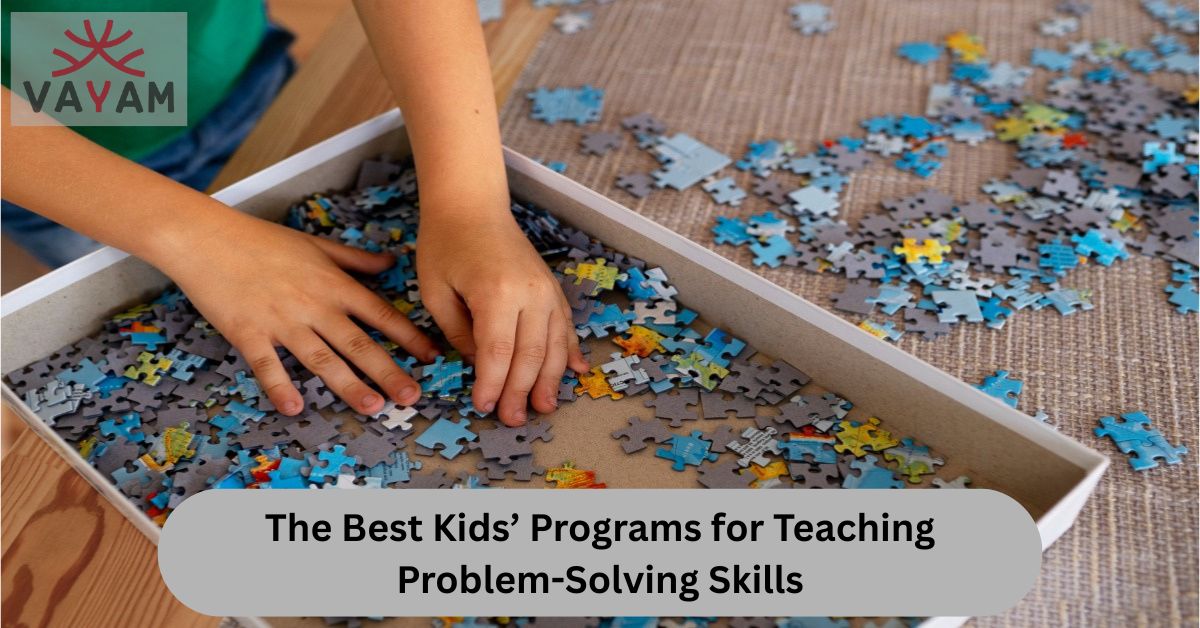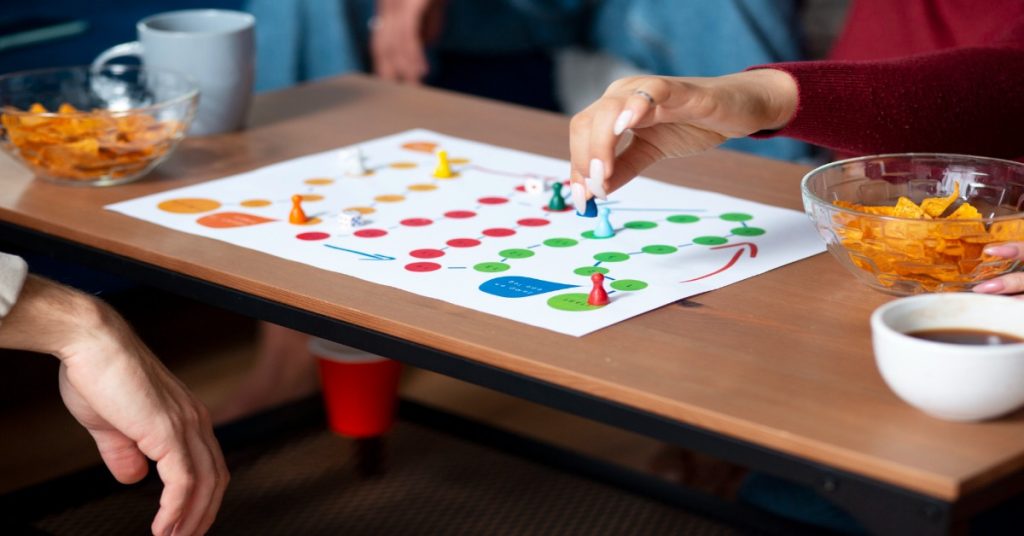
Does this sound familiar? Your child is building a complex Lego set, and a piece doesn’t fit. Instead of trying a different approach, they get frustrated and walk away. Or maybe they’re stuck on a tough math problem, and their first instinct is to ask for the answer rather than think it through.
If you’re a parent watching this happen, it’s tough. You know that life will throw countless puzzles, big and small, at your child. You want them to have the tools to face those challenges head-on, but you’re not sure how to help them build those muscles.
The good news? Problem-solving isn’t just a natural talent, it’s a skill that can be taught and practiced. And some of the best practice happens outside the classroom in programs designed to make critical thinking fun.
This blog is here to help you cut through the noise. We’ll look at some of the best types of programs available that are quietly building the next generation of innovators, engineers, and creative thinkers by turning problems into play.
Why Problem-Solving is the Superpower Your Child Needs?
Before we look at the programs, let’s talk about why this skill is so important. It’s more than just fixing a broken toy or solving a homework question.
Strong problem-solving skills help children:
- Build Resilience: When kids learn that it’s okay to try and fail, they develop grit. They understand that the first attempt isn’t always the last, and that “stuck” is a temporary state.
- Grow in Confidence: There’s nothing like the feeling of figuring something out on your own. Each small victory gives a child a boost of self-esteem that carries over into school and social situations.
- Improve Academic Performance: From reading comprehension to complex science projects, every subject requires a degree of logical thinking and analysis.
- Prepare for the Future: Whatever career path they choose, the ability to think critically and solve complex problems will be one of their greatest assets.
The key is to find an activity that feels less like a lesson and more like an adventure. Let’s find that adventure for your child.

Category 1: Coding & Computer Science Programs
In the world of coding, problem-solving is the name of the game. Kids learn to break down big challenges into small, manageable steps—a skill called computational thinking.
My child loves screen time, but I wish it was more productive than just watching videos.”
Transform screen time into creation time. Coding programs teach children how to build their own games, animations, and websites, turning them from consumers into creators.
Top Program Picks:
- Scratch (MIT Media Lab): Perfect for beginners, Scratch uses a simple block-based interface. Kids drag and drop code blocks to make characters move, jump, and interact. They quickly learn about sequences, loops, and conditionals—all while seeing their story come to life. It’s free and a wonderful starting point for ages 7 and up.
- Tynker: This platform offers a structured path from block-based coding to Python and JavaScript. With themes like Minecraft modding and drone programming, it’s incredibly engaging for kids who already have specific interests. It offers both free and paid subscription plans.
- Code.org: Famous for its “Hour of Code” tutorials featuring characters from Star Wars, Frozen, and more, this site is fantastic for hooking kids instantly. The curriculum is well-designed and used in many schools, making it a great supplemental tool at home.
What They Learn: Logical reasoning, pattern recognition, debugging (finding and fixing errors), and persistence.
Category 2: Robotics & Engineering Kits
For kids who learn best by doing, robotics is a hands-on winner. It brings code off the screen and into the real world.
Pain Point: “My child is a hands-on learner who gets bored with traditional lessons. They need to touch and build to understand.”
The Solution: Robotics kits combine the physical act of building with the intellectual challenge of programming, offering a full-cycle problem-solving experience.
Top Program Picks:
- LEGO Mindstorms/SPIKE Prime: This is where LEGO building meets smart technology. Kids construct robots out of familiar LEGO pieces but then program them to move, sense their environment, and complete tasks. It’s a powerful system that can grow with your child’s skill level.
- littleBits: These are electronic building blocks that snap together with magnets. Kids can create circuits without any wiring or soldering, inventing everything from a simple flashlight to a working remote-controlled car. It’s a brilliant, low-frustration introduction to electronics.
- FIRST LEGO League: This is a global robotics competition for teams of children. The challenge is more than just building a robot; it’s about teamwork, research, and presenting solutions to a real-world problem. It’s an incredible program for building both technical and social skills.
What They Learn: Systems thinking, mechanical design, iterative testing (the cycle of build-test-improve), and teamwork.

Category 3: Creative & Design-Based Programs
Problem-solving isn’t always about logic and data. Some of the world’s best problems are solved with a heavy dose of creativity.
Pain Point: “My child is artistic and creative, but I’m not sure how to direct that energy into building practical skills.”
The Solution: Programs that focus on design, filmmaking, and game development channel creative energy into structured projects that require planning and execution.
Top Program Picks:
- DIY Game Design (with platforms like Roblox Studio or Unity): Kids can learn to design their own 3D worlds and games. This process involves storytelling, level design, and user experience thinking—they have to ask, “Will the player find this fun and understandable?”
- Animation & Film-Making Workshops: Local museums or online platforms like Outschool often offer workshops where kids storyboard, shoot, and edit their own short films. They solve problems related to pacing, narrative, and visual communication.
- Design Thinking Workshops: Some forward-thinking organizations and schools run workshops based on “Design Thinking.” This is a process for creative problem-solving where kids identify a user’s need, brainstorm ideas, build rough prototypes, and test them. It’s a human-centered approach to innovation.
What They Learn: Empathy, creative brainstorming, project planning, and the ability to give and receive constructive feedback.
Category 4: Strategy Games & Clubs
Never underestimate the power of play. For centuries, games have been our primary tool for teaching strategy and foresight.
Pain Point: “I want to find a social activity that also makes my child think, without feeling like extra schoolwork.”
The Solution: Board games and strategy clubs are a social, low-pressure way to practice thinking several steps ahead and adapting to an opponent’s moves.
Top Program Picks:
- Chess Clubs: The classic game of strategy. Chess teaches pattern recognition, planning, and the consequences of your decisions. Many schools have clubs, and online platforms like ChessKid make it easy and fun to learn.
- Strategic Board Games: Modern games go far beyond Monopoly. Games like Catan Junior, Carcassonne, or Forbidden Island require negotiation, resource management, and cooperative problem-solving.
- Debate or Model UN Clubs: For older children, these clubs are powerhouses for developing critical thinking. They learn to build structured arguments, anticipate counterpoints, and find solutions to complex global issues.
What They Learn: Planning ahead, anticipating consequences, flexibility, and under-pressure decision-making.

How to Choose the Right Program for Your Child?
With so many great options, how do you pick? Ask yourself these questions:
- What are their natural interests? Does your child love puzzles and math? Coding might be a hit. Do they take things apart to see how they work? Try a robotics kit. Are they always telling stories? A game design program could be perfect.
- What is their learning style? Do they need to move and build? Hands-on robotics is great. Do they enjoy quiet, thoughtful concentration? Chess or strategic games might be better.
- What is your budget and schedule? Free online platforms like Scratch are a fantastic way to start. Local clubs often have low fees, while specialized robotics kits are a bigger investment.
- What is the program’s philosophy? Look for programs that emphasize the process over the product. The goal isn’t a perfect robot or a flawless game; it’s the learning that happens when things go wrong and your child figures out how to make them right.
Building a Problem-Solver at Home
You don’t always need a formal program. You can encourage these skills every day.
- When they ask for help, ask a question back. Instead of giving the answer, try: “What have you tried so far?” or “What do you think would happen if you tried it this way?”
- Embrace productive struggle. Let them feel a little frustration. It’s okay to be stuck. Step in only when the frustration becomes unproductive.
- Talk about your own problems. Narrate how you solve a daily challenge, like figuring out a new route to avoid traffic or fixing a wobbly chair. You are their first and most important model of a problem-solver.
Read More
Why Public Speaking is a Must-Have Skill for Your Child?
How to Encourage Kids to Dream Big and Set Goals?
Creative Ways to Teach Kids Public Speaking & Communication Skills
The Grand Finale: More Than Just a Skill
Finding the right program for your child is about more than just filling their after-school hours. It’s about giving them a gift that will last a lifetime. It’s the confidence to face a difficult task, the creativity to think of a new solution, and the resilience to try again when the first idea doesn’t work.
These programs don’t just teach kids how to code a robot or win a chess game. They teach them how to think. And in a world that is constantly changing, that is the greatest tool you can give them.
